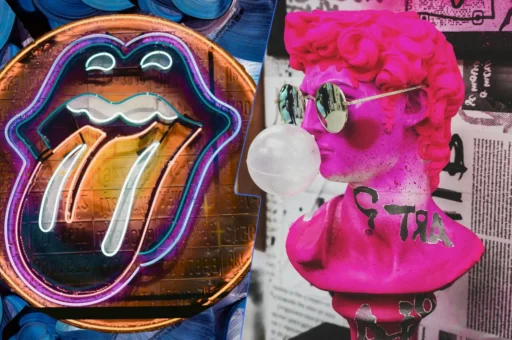Introduction
Rock and pop music are two of the most influential and popular music genres in the world. Each has its unique characteristics, history, and fan base. This article delves into the origins, development, and significant aspects of rock and pop music, comparing their differences and exploring what makes each genre resonate with audiences worldwide.
Rock Music: The Rebellious Spirit
Early History and Origins
Rock music originated in the early 1950s in the United States, evolving from earlier genres such as blues, country, and rhythm and blues. The genre is often credited to pioneers like Chuck Berry, Elvis Presley, and Little Richard, who infused energetic performances and electric guitar-driven sounds into their music.
Key Moments and Breakthroughs
- First Rock Song: “Rocket 88” by Jackie Brenston and his Delta Cats (1951), often considered one of the first rock and roll records.
- Rise to Fame: Elvis Presley’s “Heartbreak Hotel” (1956) became a massive hit, propelling rock music into the mainstream.
- Iconic Songs:
- “Stairway to Heaven” by Led Zeppelin: Over 600 million YouTube views, iconic guitar solo.
- “Bohemian Rhapsody” by Queen: Over 1.2 billion YouTube views, groundbreaking music video.
- “Hotel California” by Eagles: Over 700 million YouTube views, legendary guitar riff.
- “Smoke on the Water” by Deep Purple: Over 200 million YouTube views, famous riff.
- “Sweet Child o’ Mine” by Guns N’ Roses: Over 1 billion YouTube views, iconic rock anthem.
Notable Concerts
- Woodstock (1969): Gathered over 400,000 people, featured performances by Jimi Hendrix and The Who.
- Live Aid (1985): Raised over $125 million for famine relief, featured Queen’s legendary performance.
- The Rolling Stones at Hyde Park (1969): Over 250,000 attendees, tribute to Brian Jones.
- Led Zeppelin at Madison Square Garden (1973): Iconic performance, later featured in “The Song Remains the Same” film.
- Pink Floyd at Pompeii (1971): Historic concert film, no audience present, iconic performance.
Famous Bands and Artists
- The Beatles: Revolutionized rock music, over 1 billion records sold.
- The Rolling Stones: Known for their longevity and influence, over 240 million records sold.
- Led Zeppelin: Pioneers of hard rock, over 300 million records sold.
- Queen: Known for their eclectic style and powerful performances, over 300 million records sold.
- Nirvana: Key figures in the grunge movement, over 75 million records sold.
Numbers and Records
- Largest Crowds:
- Rod Stewart at Copacabana Beach (1994), approximately 3.5 million people.
- The Rolling Stones at Copacabana Beach (2006), approximately 1.5 million people.
- YouTube Views: Rock genre cumulative views exceed 50 billion.
- Number of Bands/Artists: Over 100,000 active rock bands worldwide.
- Number of Songs: Estimated at over 500,000 rock songs.
Pop Music: The Mainstream Magnet
Early History and Origins
Pop music, short for “popular music,” emerged in its modern form in the mid-1950s. Although its roots can be traced back to earlier popular music forms, it became distinct with the rise of rock and roll. Artists like Elvis Presley and The Beatles played crucial roles in shaping the genre.
Key Moments and Breakthroughs
- First Pop Song: “Rock Around the Clock” by Bill Haley & His Comets (1954), often considered the first mainstream pop song.
- Rise to Fame: The Beatles’ appearance on The Ed Sullivan Show (1964) sparked the “British Invasion” and pop music’s global dominance.
- Iconic Songs:
- “Thriller” by Michael Jackson: Over 1 billion YouTube views, groundbreaking music video.
- “Like a Prayer” by Madonna: Over 200 million YouTube views, controversial and influential.
- “Baby One More Time” by Britney Spears: Over 500 million YouTube views, pop anthem of the late ’90s.
- “Shape of You” by Ed Sheeran: Over 5.5 billion YouTube views, best-selling digital song.
- “Rolling in the Deep” by Adele: Over 2 billion YouTube views, critically acclaimed and commercially successful.
Notable Concerts
- Michael Jackson’s Dangerous World Tour (1992-1993): Grossed over $125 million, iconic performances.
- Madonna’s Blond Ambition Tour (1990): Known for its theatricality, significant cultural impact.
- Live Aid (1985): Featured major pop acts, raised millions for famine relief.
- Britney Spears’ Dream Within a Dream Tour (2001-2002): Highly successful, grossed over $43 million.
- Ed Sheeran’s ÷ Tour (2017-2019): Became the highest-grossing tour of all time, earning $776 million.
Famous Bands and Artists
- Michael Jackson: Known as the King of Pop, over 750 million records sold.
- Madonna: Known as the Queen of Pop, over 300 million records sold.
- Britney Spears: Pop icon of the late ’90s and early 2000s, over 100 million records sold.
- Taylor Swift: Dominates contemporary pop, over 200 million records sold.
- Ed Sheeran: Leading modern pop artist, over 150 million records sold.
Numbers and Records
- Largest Crowds:
- Rod Stewart at Copacabana Beach (1994), approximately 3.5 million people.
- Michael Jackson’s concert in Prague (1996), approximately 125,000 people.
- YouTube Views: Pop genre cumulative views exceed 100 billion.
- Number of Bands/Artists: Over 200,000 active pop artists worldwide.
- Number of Songs: Estimated at over 1 million pop songs.
Comparative Analysis
Musical Style and Evolution
Rock music is characterized by its use of electric guitars, bass, drums, and strong rhythms. It often emphasizes raw emotion, rebellion, and personal expression. Rock has evolved through various sub-genres, including punk, metal, grunge, and alternative, each with its distinct sound and cultural impact.
Pop music, on the other hand, is designed to appeal to a broad audience. It typically features catchy melodies, simple lyrics, and a focus on production. Pop is known for its ability to incorporate elements from various genres, resulting in a constantly evolving sound that reflects contemporary trends.
Cultural Impact and Influence
Both rock and pop music have had significant cultural impacts. Rock music has been associated with social and political movements, symbolizing rebellion and change. It has influenced fashion, language, and attitudes, making it a powerful cultural force.
Pop music, with its wide appeal, has shaped mainstream culture. It has influenced fashion, dance, and lifestyle, often reflecting and shaping societal trends. Pop artists often become cultural icons, setting trends and influencing public opinion.
Numbers and Statistics
Both genres have impressive numbers regarding concert attendance, YouTube views, and the number of active artists. Rock music’s largest concert crowds include Rod Stewart’s 1994 performance at Copacabana Beach, The Rolling Stones’ 2006 performance at Copacabana Beach, and Jean-Michel Jarre’s 1997 concert in Moscow. Pop music shares the record for the largest crowd with Rod Stewart and Jean-Michel Jarre, and also includes Michael Jackson’s 1996 concert in Prague.
Revenue and Financial Success
Both genres generate substantial revenue from tours, albums, and merchandise. Pop music tends to dominate in terms of overall sales and concert revenue, partly due to its broader appeal and mainstream presence. However, rock music remains a significant force, with major tours and iconic bands continuing to draw large audiences and generate high revenues.
Notable Awards and Recognition
Both rock and pop artists have received numerous awards and accolades. Rock bands like The Beatles and The Rolling Stones have been inducted into the Rock and Roll Hall of Fame, while pop artists like Michael Jackson and Madonna have received countless awards, including Grammys and MTV Video Music Awards.
Conclusion
Rock and pop music each offer unique appeals and cater to different tastes and preferences. Rock music is celebrated for its raw emotion, powerful performances, and cultural impact, attracting those who appreciate its rebellious spirit and musical complexity. Pop music, with its catchy melodies, broad appeal, and constant evolution, attracts a wide range of listeners who enjoy its accessibility and entertainment value.
Who Would Be Victorious?
Deciding which genre is superior ultimately depends on personal preference. Rock music appeals to those who value its depth, history, and influence on culture, while pop music appeals to those who enjoy its catchy, upbeat nature and mainstream presence. Both genres have made significant contributions to the music industry and continue to resonate with audiences worldwide.
Reader Engagement
What are your thoughts on rock music versus pop music? Share your experiences and opinions in the comments below! Don’t forget to share this article on social media and join the conversation about these two influential music genres.
By exploring the histories, characteristics, and unique attributes of rock and pop music, we gain a deeper understanding of what makes each genre special. Whether it’s the rebellious energy of rock or the catchy melodies of pop, both genres offer exceptional music that continues to captivate and inspire audiences around the world.





